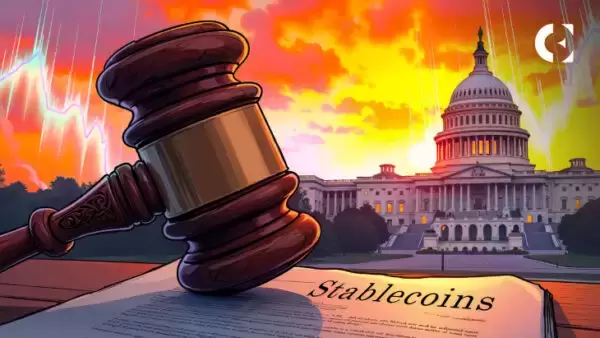 |
|
 |
|
 |
|
 |
|
 |
|
 |
|
 |
|
 |
|
 |
|
 |
|
 |
|
 |
|
 |
|
 |
|
 |
|
Cryptocurrency News Articles
Top 10 U.S.-Made Digital Assets by Market Capitalization
Jan 28, 2025 at 04:30 pm
The recent Executive Orders on Crypto announced by President Donald Trump aims to cement U.S. leadership in digital finance.

The recent Executive Orders on Crypto announced by President Donald Trump aim to cement U.S. leadership in digital finance. The Crypto Executive Orders establish the Presidential Working Group on Digital Asset Markets, a high-level initiative designed to create a cohesive regulatory framework for digital assets while fostering innovation and protecting economic liberty.
A recent statement by Eric Trump suggests that U.S.-based projects like XRP and Hedera (HBAR) could be poised to benefit from zero capital gains tax, a significant advantage that could boost their value in the eyes of investors. In contrast, non-U.S.-based crypto projects may face higher capital gains taxes of around 30%.
This article explores the top U.S.-made digital assets by market capitalization, shedding light on how these assets could gain traction in the coming years, especially with favorable tax policies potentially set to favor American projects.
1. Ripple (XRP)
Launch date: 2012
Founders: Ripple Labs
The XRP Ledger (XRPL), launched in 2012, is an open-source, decentralized blockchain designed for efficiency, speed, and scalability. Co-created by David Schwartz, Jed McCaleb, and Arthur Britto, XRPL introduced XRP as its native cryptocurrency, aiming to provide a faster, greener alternative to Bitcoin. Soon after, the trio, along with Chris Larsen, founded Ripple to develop use cases for XRP, including the global payments network RippleNet.
With transaction costs as low as $0.0002 and settlement times of just 3–5 seconds, the XRP Ledger can process up to 1,500 transactions per second while maintaining carbon-neutral operations. It pioneered features like the first decentralized exchange (DEX) and built-in tokenization capabilities, enabling applications in payments, asset tokenization, DeFi, CBDCs, and stablecoins. Having closed over 70 million ledgers reliably, XRPL remains a cornerstone for developers seeking innovative solutions in the blockchain ecosystem.
2. Solana (SOL)
Launch date: 2020
Founder: Solana Labs
Solana is a high-performance blockchain designed for speed, scalability, and cost-efficiency. It can theoretically process up to 710,000 transactions per second, with real-world performance typically ranging from 2,000 to 3,000 TPS. This is achieved through its unique Proof of History mechanism, which timestamps transactions without requiring validators to synchronize, ensuring fast and reliable processing. With transaction costs averaging just $0.00025, Solana is an ideal platform for decentralized applications, including DeFi, NFTs, and Web3.
The network is powered by its native token, SOL, which is used for transaction fees and staking. By staking SOL, users help secure the network while earning rewards, incentivizing validators to act honestly. Validators who misbehave risk losing part of the staked tokens. Solana’s token supply is inflationary, starting at 8% annual inflation and gradually decreasing to 1.5%. Combining speed, low fees, and reliability, Solana has become a top choice for developers building blockchain innovations.
3. USDC (USDC)
Launch date: 2018
Founders: Circle and Coinbase
USDC is a stablecoin pegged to the U.S. dollar on a 1:1 basis, with every unit backed by $1 held in reserve through a mix of cash and short-term U.S. Treasury bonds. Launched in 2018 by the Centre Consortium, USDC, is issued by regulated financial institutions and aims to provide “digital money for the digital age.” Designed for a cashless world, USDC serves as a stable asset for crypto traders, facilitates digital payments for businesses, and powers innovations in decentralized finance and gaming. Its ultimate goal is widespread adoption across wallets, exchanges, and dApps.
Additionally, USDC distinguishes itself through transparency and regulatory compliance. A major accounting firm verifies its reserves to ensure users can redeem 1 USDC for $1 without concern. Unlike competitors, USDC has avoided controversy and gained trust through consistent clarity about its backing. As a result, it has grown its market share, narrowing the gap with other leading stablecoins.
4. Dogecoin (DOGE)
Launch date: 2013
Founders: Billy Markus and Jackson Palmer
Dogecoin is a lighthearted, open-source cryptocurrency that originated from the popular “doge” meme featuring a Shiba Inu. Created in December 2013 by Billy Markus and Jackson Palmer, Dogecoin was forked from Litecoin and designed to appeal to a broader audience by combining humor with accessibility. The coin gained significant attention after Tesla CEO Elon Musk publicly declared it his favorite cryptocurrency in 2021, triggering massive price rallies fueled by his tweets and memes.
Initially popular as a tipping system on platforms like Reddit and Twitter, Dogecoin allows users to reward quality content or interact within its active community. It remains
Disclaimer:info@kdj.com
The information provided is not trading advice. kdj.com does not assume any responsibility for any investments made based on the information provided in this article. Cryptocurrencies are highly volatile and it is highly recommended that you invest with caution after thorough research!
If you believe that the content used on this website infringes your copyright, please contact us immediately (info@kdj.com) and we will delete it promptly.
-

- U.S. House Financial Services Committee Advances “STABLE Act” Aimed at Creating a Dedicated Framework for Stablecoin Regulation
- Apr 03, 2025 at 10:00 am
- The STABLE Act, designed to create a dedicated federal framework specifically for stablecoin regulation, has reportedly gained significant bipartisan support.
-

-

- Shocking footage has emerged of a woman cutting down a poster of independent Fowler MP Dai Le
- Apr 03, 2025 at 09:55 am
- Shocking footage has emerged of a woman cutting down a poster of independent Fowler MP Dai Le, saying she's doing so because the Vietnamese-Australian is a “Communist” and a “Muslim”.
-

-

-

-

-

- Elon Musk Resigns from Trump Administration, Sending Shockwaves Through Crypto and Political Spheres
- Apr 03, 2025 at 09:45 am
- In an unexpected and unprecedented development, tech magnate and billionaire entrepreneur Elon Musk has reportedly stepped down from his position in the Trump administration. This decision has sparked widespread reactions across financial markets, cryptocurrency platforms, and political circles worldwide.
-




























































